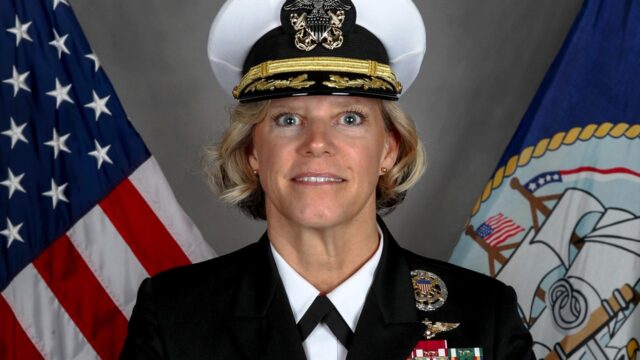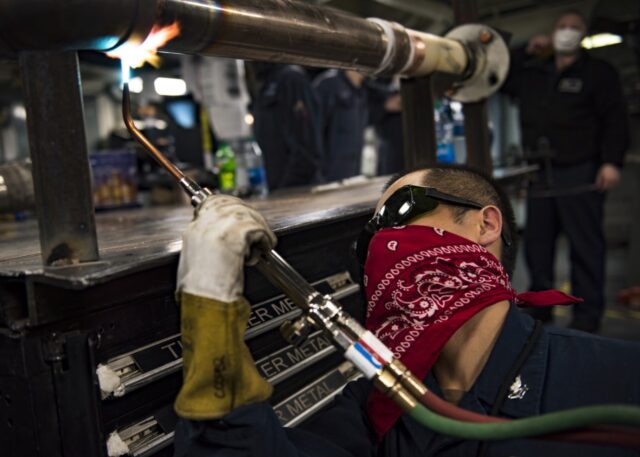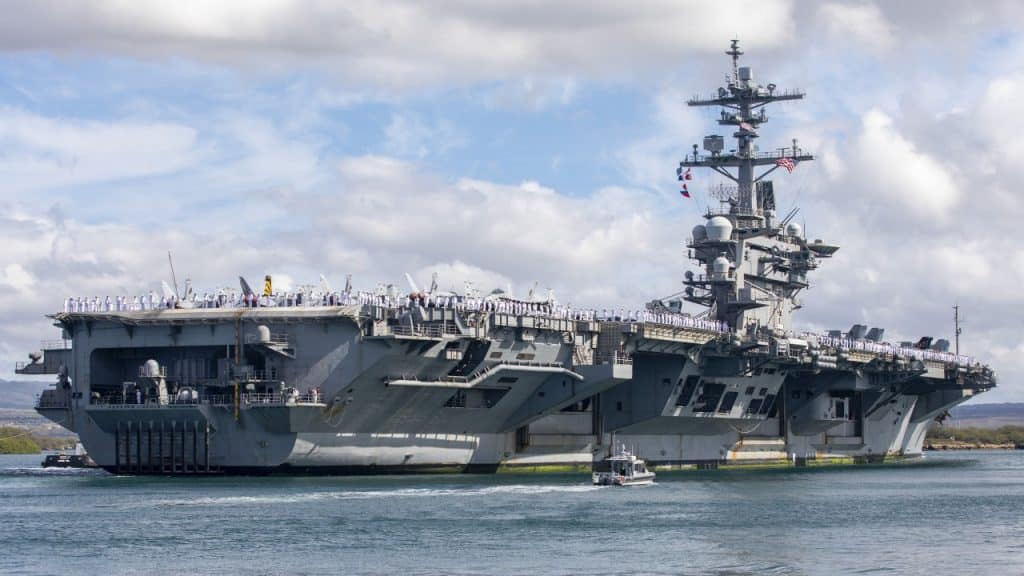Drinking water tests on the Nimitz aircraft carrier USS Abraham Lincoln (CVN 72) showed contamination with Escherichia coli (coliform bacteria). There were no cases of infection among the crew, but this is a compromising situation for the US Navy, as we are dealing with the second case of drinking water contamination on the Nimitz-class in … less than a week.
The first signs of contamination were found on September 21, when Lincoln was off the southern coast of California, the US Navy press service reported. The sailors then noticed that the water was cloudy and smelled strange. Corrective measures were taken immediately: the tank from which the suspect water was drawn was disconnected (there are twenty-six such tanks on the ship) and another one was connected, and engineering and medical teams began testing the supply of drinking water at various locations on the ship, including the tanks. Meanwhile, the sailors were given bottled water.
In the video below, one of the sailors presents a bottle of water taken from the ship’s installation. As you can see, “cloudy” is an exceptionally delicate term.
On September 22, E. coli was found to be present in three drinking water tanks. These tanks were isolated from the water distribution system and secured. On September 24, both the odor and the turbidity subsided, but since these were unrelated to the presence of bacteria, additional water samples were sent ashore to the Orange Coast Analytical laboratory on the same day. Two days later, the water was found to be in compliance with the standards in terms of pH, turbidity, hardness, and the presence of aluminum, copper, lead and sodium.
The three contaminated tanks remained disconnected and isolated from the rest of the installation. When the ship returned to San Diego’s North Island Naval Air Station on October 3, it was connected to the municipal water supply to ensure the crew had access to clean water. If the tanks have not yet been sanitized and checked, that will be before the ship goes to sea again.

Sailors on Lincoln while moored in San Diego on October 3.
(US Navy / Mass Communication Specialist 3rd Class Han Puyu)
Military.com asked the press service of the US Navy whether the drinking water tanks (which also function as ballast tanks) were contaminated with sewage. A spokesman for the US Navy Air Force Command, Lieutenant Commander Zachary Harrell, gave an evasive reply about an ongoing detailed analysis of the exact causes of the incident.
However, a disturbing picture of the situation on the ship emerges from the picture of the situation presented by Military.com. When the crew became aware of the drinking water problem, Commander Amy Bauernschmidt, the first woman in command of an aircraft carrier in the US Navy, spoke to the crew through the ship’s HQ, but her speech did not seem to cheer the sailors. In other messages, she admitted that the water tastes salty, but is not dangerous and does not contain bacteria.

“First after God” on Lincoln – Commander Bauernschmidt.
(US Navy)
Commander Bauernschmidt stated that she had a bottle of “exactly what everyone was talking about” in front of her, assured that she had taken a “wonderful shower” in this water last night (…!), And now she even tasted it and found it perfect for drinking. She also reminded the crew that E. coli is a very common bacterium that everyone on board the ship has in their digestive system. When she said this, the sailors began to protest loudly. It is hardly surprising – E. coli infection can be life-threatening.
Bauernschmidt is a helicopter pilot, once commanded the HSM-70 Spartans squadron, she took command of Lincoln in August 2021. Five months later, she led the carrier with a strike group on an operational voyage in the Pacific.

The sailor brazes a pipe for the drinking water distribution system on the USS Carl Vinson (CVN 70) Nimitz aircraft carrier.
(US Navy / Mass Communication Specialist 3rd Class Josiah J. Kunkle)
A particular problem for the navy’s image is that pollution apparently comes in pairs. A similar problem has just occurred on the USS Nimitz aircraft carrier. There, drinking water was contaminated with JP-5 aviation fuel. The problem was also noticed on September 16 during operations off the coast of southern California. The very next day he was back in San Diego and was also connected to the city’s water supply. A solution to the problem was quickly announced, but just as quickly it turned out that the Navy was only trying to soap the media’s eyes.
In the end, the US Navy admitted that five Nimitz seamen had health problems possibly due to exposure to contaminated water. According to the official announcement, the problem was not related to a defect in the fuel system or a leak from the fuel tanks, but to the injection of fuel into the water distribution system by mistake. The ship finally went to sea on October 2. Water pollution and a long stay in San Diego thwarted his plans to participate in the COMPTUEX (Composite Training Unit Exercise), preparing for an operational cruise. Of course, the exercises have resumed, but it is not known yet if and how the unplanned break will affect the implementation of the schedule.
See also: British minehunters and underwater drones for Ukraine
US Navy / Mass Communication Specialist 2nd Class Aja Bleu Jackson

